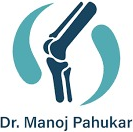Endoscopic Spine Surgeries in Nagpur
Advanced minimally invasive spine treatments with quicker recovery, less pain, and improved outcomes under expert surgical care.
What is Endoscopic Spine Surgery?
Endoscopic Spine Surgery: A minimally invasive surgical technique that uses a tubular system and an endoscope (a small camera) to visualize and treat spinal conditions. This method reduces muscle and tissue damage, leading to shorter recovery times, less postoperative pain, and smaller scars compared to traditional open surgery.
This surgery is designed to treat spinal problems with precision while preserving the surrounding healthy tissues. By using advanced imaging and specialized instruments, surgeons can access the affected area through tiny incisions. This approach not only minimizes complications but also helps patients return to their normal activities faster than conventional methods.

Common Indications
- Herniated discs
- Spinal stenosis
- Degenerative disc disease
- Spinal infections
- Certain spinal tumors
- Nerve impingement syndromes
Types of Endoscopic Spine Surgeries
Endoscopic spine surgeries use small incisions and camera-guided tools to treat spinal conditions with less tissue damage, faster recovery, and minimal scarring. These procedures are ideal for patients needing precise treatment without the risks of open surgery.
Endoscopic Discectomy
A minimally invasive surgery that removes the part of a herniated disc pressing on a nerve. It helps ease pain and restore movement with faster recovery and minimal scarring.
Procedure:
Preoperative
- MRI or CT scan to locate herniated disc, patient evaluation.
Surgical Steps
- Incision: Small incision (about 1 cm) over the affected area.
- Endoscope Insertion: An endoscope with a camera and light source is inserted through the incision.
- Discectomy: Specialized instruments are used to remove the herniated disc material, compressing the nerve.
- Closure: The incision is closed with sutures or surgical glue, and a sterile dressing is applied.
Postoperative
- Minimal scarring, rapid recovery, early mobilization, and physical therapy.
Endoscopic Foraminotomy
Procedure:
Preoperative
- Imaging studies to identify the narrowed foramina, patient evaluation.
Surgical Steps
- Incision: Small incision.
- Endoscope Insertion: An endoscope is inserted to visualize the foramen.
- Foraminotomy: Removal of bone or tissue compressing the nerve using specialized instruments.
- Closure: The incision is closed with sutures or surgical glue, and a sterile dressing is applied.
Postoperative
- Quick recovery, reduced pain, early return to normal activities, physical therapy.
Endoscopic Spinal Fusion
A minimally invasive surgery that fuses two or more vertebrae to stabilize the spine and reduce pain from instability or severe disc degeneration. Using an endoscope, bone grafts and hardware are placed with minimal tissue disruption for faster recovery.
Procedure:
Preoperative
- Imaging studies for surgical planning, patient evaluation.
Surgical Steps
- Incision: Small incisions.
- Endoscope Insertion: An endoscope and instruments are inserted.
- Preparation: Removal of damaged discs or bone.
- Fusion: Placement of bone grafts and stabilization with screws or rods through the endoscope.
- Closure: The incisions are closed with sutures or surgical glue, and a sterile dressing is applied.
Postoperative
- Shorter hospital stay, reduced recovery time, less postoperative pain, physical therapy.
Endoscopic Tumor Resection
A minimally invasive surgery to remove certain spinal tumors while protecting healthy tissue. Using an endoscope allows precise removal, less tissue damage, and a faster recovery.
Procedure:
Preoperative
- Imaging studies and biopsy, patient evaluation.
Surgical Steps
- Incision: Small incisions.
- Endoscope Insertion: An endoscope with surgical instruments is inserted.
- Resection: Precise removal of the tumor using specialized instruments.
- Closure: The incisions are closed with sutures or surgical glue, and a sterile dressing is applied.
Postoperative
- Less tissue damage, faster recovery, close monitoring for recurrence, physical therapy
Endoscopic Laminotomy
Procedure:
Preoperative
- Imaging studies to locate the area of compression, patient evaluation.
Surgical Steps
- Incision: Small incision.
- Endoscope Insertion: An endoscope is inserted to visualize the lamina.
- Laminotomy: Removal of a portion of the lamina to decompress the spinal cord or nerves.
- Closure: The incision is closed with sutures or surgical glue, and a sterile dressing is applied.
Postoperative
- Minimal scarring, reduced pain, faster recovery, physical therapy.
Benefits of Endoscopic Spine Surgery
Endoscopic spine surgery offers patients an advanced, less invasive alternative to traditional open surgery. By using small incisions and specialized instruments, it minimizes tissue damage, speeds up recovery, and reduces the risk of complications, all while delivering effective results.
- Minimally Invasive: Smaller incisions, less tissue damage.
- Reduced Pain: Less postoperative pain due to minimal disruption of muscles and tissues.
- Shorter Hospital Stay: Many procedures can be performed on an outpatient basis.
- Faster Recovery: Patients typically recover more quickly and return to normal activities sooner.
- Lower Risk of Complications: Reduced risk of infection, blood loss, and other complications.
With these advantages, endoscopic spine surgery helps patients regain mobility and quality of life more comfortably and quickly.
Rehabilitation and Recovery
Rehabilitation after spine surgery focuses on restoring movement, strength, and function while ensuring proper healing. It combines medical care, physiotherapy, and lifestyle adjustments to help patients return safely to daily activities. A structured recovery plan also reduces the risk of future spine problems.
Immediate Postoperative Care
- Monitoring vital signs and managing pain with medications.
- Early mobilization to prevent complications such as blood clots.
Physical Therapy
- Initiation of gentle range-of-motion exercises.
- Gradual strengthening and conditioning exercises.
- Functional training to improve mobility and activities of daily living.
Wound Care
- Regular inspection and care of the surgical wound to prevent infection.
- Instructions on keeping the wound clean and dry.
Long-Term Follow-Up
- Regular check-ups to monitor healing and ensure proper recovery.
- Imaging studies as needed to assess the surgical site and spinal health.
- Addressing any persistent pain or functional issues.
Endoscopic spine surgeries provide effective treatment options for various spinal conditions with the advantages of minimal invasiveness, reduced postoperative pain, shorter recovery times, and fewer complications compared to traditional open surgeries. These procedures require precise surgical techniques and comprehensive postoperative care, including physical therapy and long-term monitoring, to ensure successful outcomes and improved quality of life for patients.
Expert Spine Care You Can Trust
Take control of your spine health today. With precise diagnosis and expert surgical care, Dr. Manoj Pahukar helps you get back to living without limits.
Frequently Asked Questions
How do I know if I’m a good candidate for endoscopic spine surgery?
You may be a candidate if you have persistent back or leg pain caused by a disc problem, spinal stenosis, or nerve compression that hasn’t improved with non-surgical treatments. Your surgeon will confirm suitability after reviewing your scans and medical history.
How long will I need to stay in the hospital?
Most endoscopic spine surgeries are performed on an outpatient basis, meaning you can go home the same day. In some cases, an overnight stay may be recommended for observation.
How soon can I walk after the procedure?
Will I need physiotherapy after surgery?
Yes. Physiotherapy is an important part of recovery, helping restore strength, flexibility, and proper posture while reducing the risk of future spine problems.
Are there any activity restrictions after surgery?
You’ll need to avoid heavy lifting, twisting, or high-impact activities for several weeks. Your surgeon will give you a personalized timeline for resuming normal activities.
How is endoscopic spine surgery different from traditional open surgery?
Endoscopic surgery uses smaller incisions and specialized instruments, causing less muscle damage, reducing pain, and allowing faster recovery compared to open surgery.
What are the possible risks or complications?
Although rare, risks can include infection, bleeding, nerve injury, or recurrence of symptoms. Choosing an experienced spine surgeon helps minimize these risks.
How soon can I return to work?
This depends on your job type and the complexity of your surgery. Many patients return to light work within 2 – 4 weeks, while physically demanding jobs may require more recovery time.
